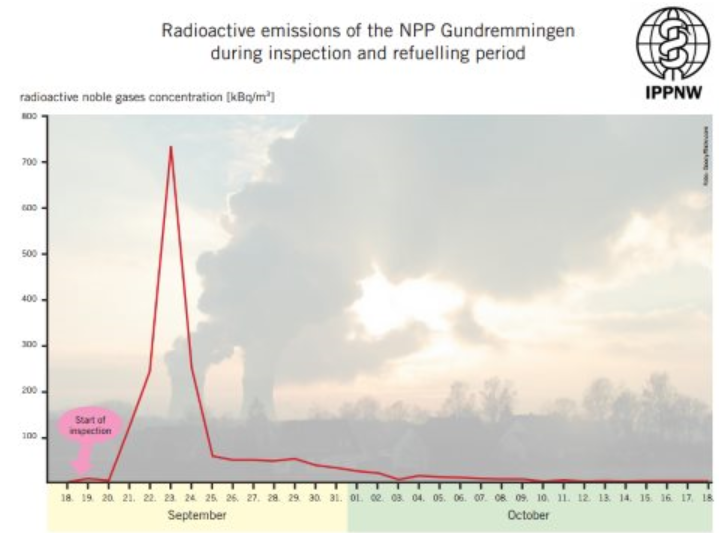The proponents of nuclear power like to say that a properly functioning nuclear power plant is no threat to public health. Dangerous radiation from materials in a nuclear reactor is invisible. Part of the problem with verifying the safety of a reactor is that fact the biological damage from radiation can take decades to reveal itself in the form of cancer. In serious accidents, we know that dangerous radiation can be released but what damage it may cause to public health is very hard to pin down. Recent research has indicated that perhaps properly functioning nuclear power plants are not as safe as has been claimed.
When numbers are given for radiation released from a properly functioning nuclear power plant, they are usually based on the average release over a year of operation. The daily or hourly emissions are not shared with the public. The problem with this measurement system is that fact that different amounts of radiation are released at different times. While the annual average release from a nuclear power plant may be within the limit set by the NRC, there are times during normal operation when radiation releases from a nuclear plant may exceed what are considered to be safe levels.
When a nuclear power reactor is opened for refueling every twelve to eighteen months, a large volume of radioactive gas is released into the atmosphere and forms a plume downwind of the reactor that can last up to twelve hours. This spike of radioactivity is above the normal and accepted level of radiation release. However, the released radiation is invisible and the public in the vicinity wis not warned of when the radioactive gas is going to be released.
In late 2011, the International Physicians for the Prevention of Nuclear War began tracking the radioactive gas released from the Gundremmingen Nuclear Power Plant in South Germany at half hour intervals. This research showed that while the daily emission of radioactive gases is usually very low and well within the mandated maximum levels, when the reactor was refueled, the release of radioactive gases including noble gases, tritium, carbon-14, iodine-131 increased sharply to more than five hundred times the usual daily release.
After this study, the German government compelled the nuclear regulators to release the non-averaged data for radiation release from Germany's nuclear power plant. It appears that the public exposure during the refueling spikes can be from twenty to one hundred times the small averaged annual exposure that has been reported in the past. While there are many factors that contribute to the exact dose that any particular person living near a nuclear power plant may experience, in general, it can be said that some members of the public may be exposed to dangerous level of radioactivity during normal nuclear power plant operation.
Statistical analysis of the health of the public living near a nuclear power plant has sometimes shown an increase in infant leukemia. Because of uncertainties about radiation release and exposure dose levels, causation of the increase in leukemia cases has been difficult to identify. It turns out that fetuses of pregnant women are especially vulnerable to radiation exposure during part of the pregnancy. If a pregnant woman is downwind of a refueling nuclear power plant, it may be that the radiation spike causes infant leukemia. With the reluctance of the nuclear industry to provide detailed information on the hourly release of radioactive materials, it is difficult to assess just how dangerous a normally operating nuclear power plant may be to the people living near it.
